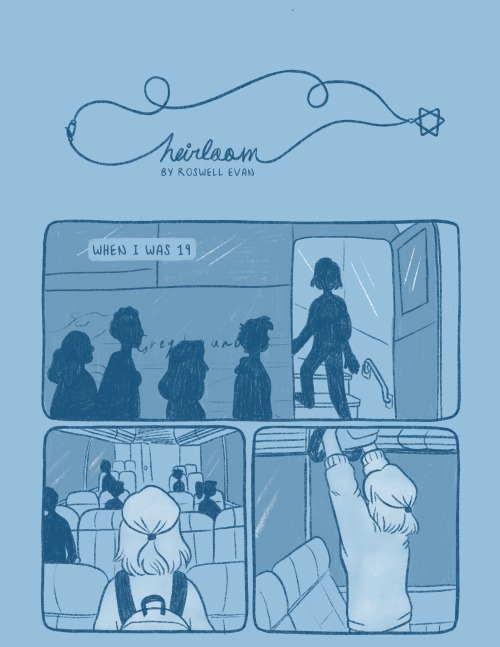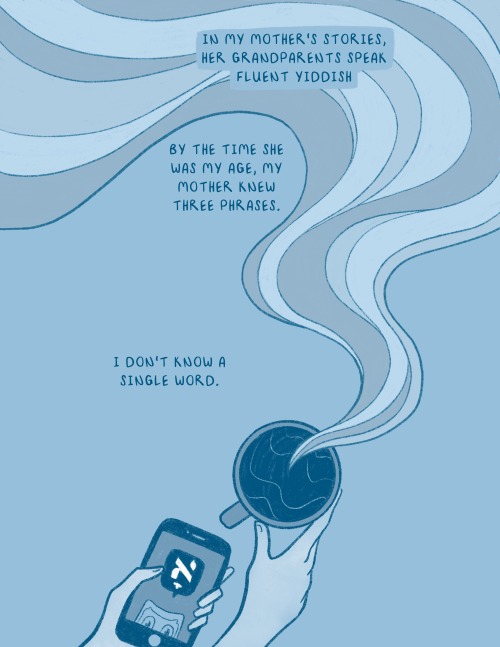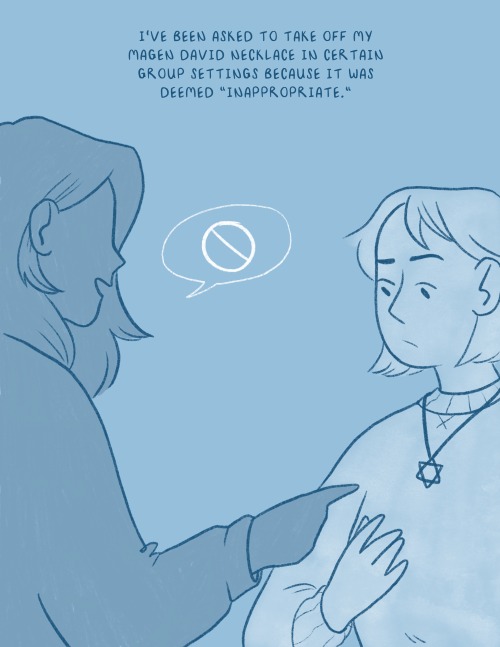maeples: glossydemonjpgs:when i started writing this comic, there were courses on duolingo for kling
maeples: glossydemonjpgs:when i started writing this comic, there were courses on duolingo for klingon and dothraki, fictional languages that are only spoken by characters on television shows who don’t exist, but the course for yiddish, a language spoken by jews – real, living, breathing people – for generations, didn’t exist until april 2021.in 2017 a jewish employee at the anne frank museum was asked to put a baseball cap over his yarmulke. yeah, you read that right – an employee who worked in the house anne frank and her family hid for two years was asked to hide his judaism when he came into work. what i’m saying is goyim are trying very hard to pretend jewish people don’t exist anymore, and it’s safer for a man to tattoo a swastika on his face than it is for me to wear a necklace with a symbol of my culture on it. [ID: a comic titled “Heirloom” by Roswell Evan. The first page says, “when I was 19”. It shows a person with shoulder-length straight hair stepping onto a bus, standing in the bus aisle, and then putting their backpack up beside their seat.The top of the second page says, “I rode on a Greyhound bus for 3 hours”. It shows the person sitting on the bus, holding their phone and looking out the window. A man comes and sits next to them, and the person looks away. The bottom of the page says, “sitting next to a man with a swastika tattooed on his cheekbone.” It shows them sitting next to each other, and then the swastika tattooed on the man’s cheek.[The full sentence says: When I was 19 I rode on a Greyhound bus for 3 hours sitting next to a man with a swastika tattooed on his cheekbone.]The third page shows separate panels of the man and the person, both turned away from each other. The next panels say, “I spent the whole ride clutching my phone tight like a lifeline, watching him out of the corner of my eye and wondering if I could switch seats without him somehow knowing why.” The art shows the person holding on tightly to their phone and glancing to the side. It then shows panels of the empty seats beside and in front of them.The fourth page says, “There aren’t words to describe how relieved I was when he got off the bus 3 stops before mine.” It shows the bus stopped with the doors open, the man walking away from the person’s seat, and the person staring out the window. Outside, the man interacts with someone, while the person on the bus watches them from the window.The fifth page shows a steaming mug sitting on a table. The person holds onto the mug with one hand, and holds their phone in the other. On the phone is the DuoLingo app. The page says, “In my mother’s stories, her grandparents speak fluent Yiddish. / By the time she was my age, my mother knew three phrases. / I don’t know a single word.”The sixth page shows the person with a Magen David necklace on. A person standing next to them points at it, with a speech bubble with a no symbol in it. The text on the page says, “I’ve been asked to take off my Magen David necklace in certain group settings because it was deemed “inappropriate.”“The seventh page has 3 panels. It shows the person still with the Magen David necklace on, then the person holding onto the necklace, and then with the necklace tucked underneath their shirt. It says, “Hiding / is something my family is so fluent in / we pass it down generation to generation, like an heirloom.”The last page shows the person standing in a grocery store aisle. The shelf in front of them says, “Happy Hanukah!” On it there are menorahs, candles, and several other items. The next panel shows the person with a shopping cart, their Magen David necklace still hidden under their shirt. The page says, “At 24, I know more about hiding my Judaism / than I do about practicing it.”] -- source link







